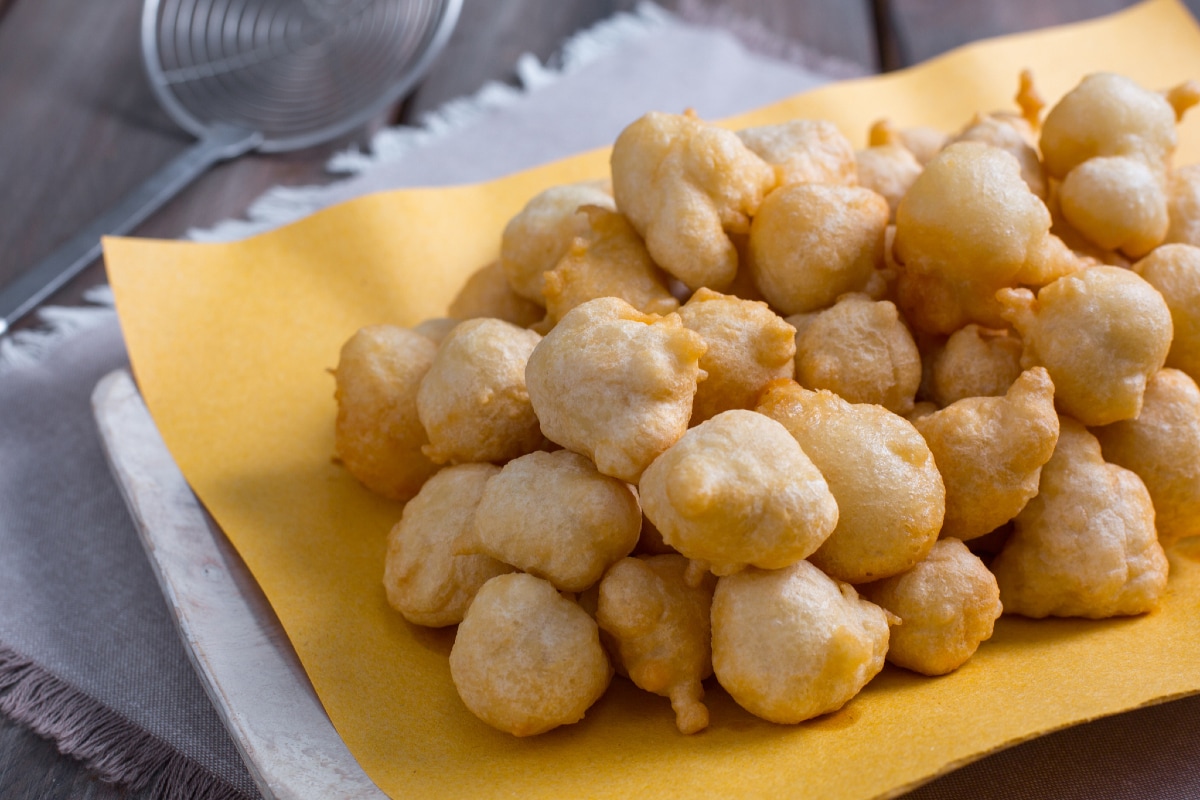Pandoro
- Very difficult
- 2 h 30 min

Pettole are these super tasty, little Italian fried dough balls that pop up all over Puglia, especially around the holidays. People in Southern Italy have been making them forever, especially for Christmas or when there's something special to celebrate. The dough? Pretty simple stuff—just the basics. And look, what you get is a pile of fluffy, crispy snacks that taste amazing straight out of the oil. Each bite gives you that golden crunch on the outside and a tender, warm center that everyone really, really wants to grab first. You might see them with different names in towns across Puglia, but the idea is always the same: simple food, meant for sharing, and seriously addictive when hot. Oh, and there's a similar snack in Tuscany called "coccoli," but the traditional Puglian pettole are definitely their own thing, especially when people dust them with sugar or drizzle them with honey for dessert.
What’s really cool—honestly—is how these pettole recipe traditions get passed down through families. Everyone has their favorite twist. Sometimes you’ll find pettole with olives or anchovies inside for that salty, savory kick. Folks love to serve them as Italian appetizers at big family gatherings, and you can't eat just one. The outside gets light and crunchy while the inside stays moist and chewy, giving you the best of both worlds with every bite. It's the kind of food that instantly makes the house smell like a party. Just set out a basket during a get-together, and watch them disappear fast. Around Puglia, pettole always mean good times and coming together. Whether you keep them plain or try one of the many pettole variations, they’re a must for anyone who loves Southern Italian cuisine. These are a must-have for any holiday spread or family gathering because, really, nothing says celebration like a plate of fresh, warm fried dough balls. Whether you’re having them as an appetizer or a sweet treat, pettole bring a taste of Puglia's rich traditions straight to your table—making any occasion feel special.
You might also like:

To prepare the pettole, start by pouring the flour into a large bowl and crumbling the fresh yeast inside 1. Begin kneading with your hands by pouring room temperature water 2 and mix until it is well absorbed. At this stage, you can assist with a pastry scraper; do not worry if the dough is sticky. Finally, add the salt 3.

Continue kneading until it is well absorbed 4. Now cover with plastic wrap 2 and let it rise at a temperature of about 75-78°F for about 2 hours. After 2 hours, the dough will have tripled in volume 6.

Pour the oil into a pot and heat it until it reaches a temperature of 340-355°F. Dip 2 spoons in the seed oil 7 and take a small portion of dough 8. Using one of the two spoons, let the dough slide into the hot oil, trying to form balls 9. Do not fry too many pieces at once to avoid lowering the oil temperature, this way you will achieve a dry fry.

Cook for 2-3 minutes until the pettole are well golden, then drain them with a slotted spoon 10 and transfer them to a tray with paper towels, to remove excess oil 11. Continue in this way until all the dough is finished. The pettole are ready, enjoy them while still hot 12!